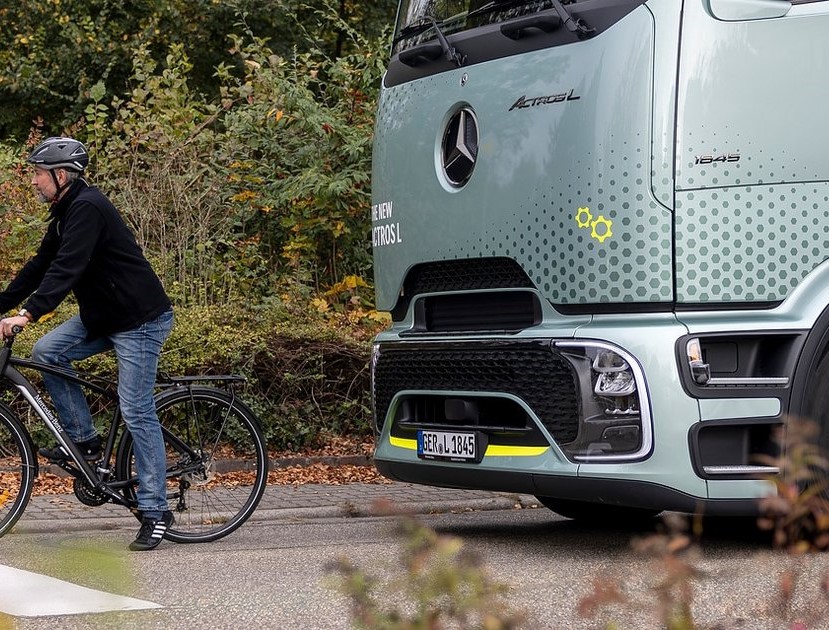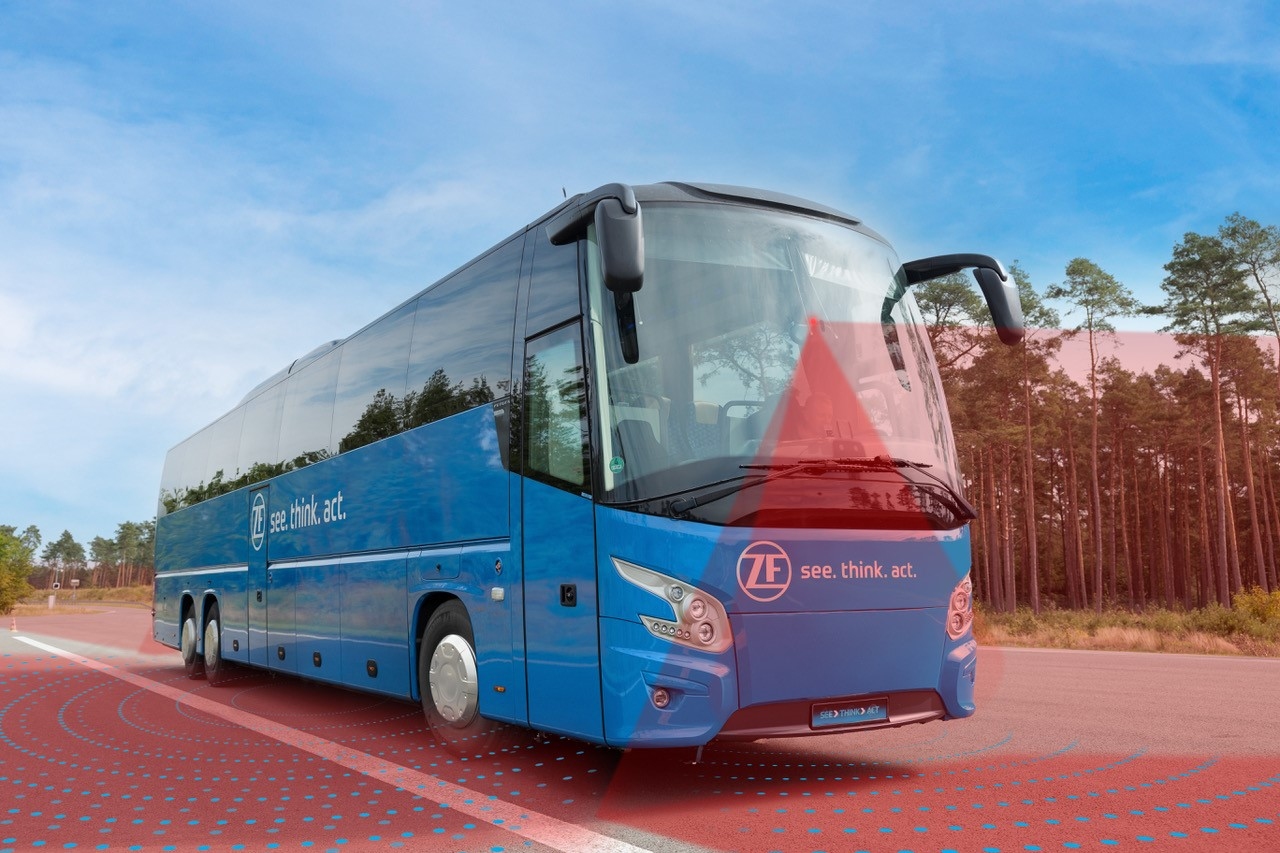
Next week brings the return of Britain’s annual national Road Safety Week campaign run by charity Brake, to raise awareness about deaths and injuries on our roads and call for improvements to safety.
To mark the event from 16-22 November, which this year has the theme ‘Safe Vehicles Save Lives’, we look at examples of some of the driver safety systems that manufacturers are providing in modern buses, trucks and vans, to make them safer than ever before.
BUSES
This autumn, London is putting into service the first Volvo BZL Electric buses equipped with City Brake – a new form of Advanced Emergency Braking (AEB).
It is a system already used on trucks, coaches and some cars, but, until now, has not been offered on buses, given the complexities for a vehicle carrying both unrestrained seated and standing passengers.
However, Transport for London (TfL) has worked closely with bus manufacturers and their suppliers in the development of the specification for AEB, and conducted extensive research and analysis in the run-up to the deployment.
So how does it work? When detecting a risk of collision, the driver is alerted, and unless immediate action is taken, the brakes are activated.
The sequence includes a pre-brake, which reduces the speed but also serves as a haptic alert signal to the driver.
If there is still no driver action, the braking force is increased to a retardation aimed to minimise the collision risk, while keeping the risk and inconvenience for standing passengers low.
At low speeds, which is typical for city traffic, the calculated time to impact is short which means that the pre-brake phase is barely noticeable. The function is active at speeds above 10 km/h.
TfL said the safety system has the potential to prevent up to 25 per cent of pedestrian fatalities from collisions involving buses, as well as help protect passengers onboard.
The system will initially operate in ‘shadow mode’, without the emergency braking function being activated, before TfL signs the system off to fully go live.
This move supports TfL’s Vision Zero goal to eliminate all fatalities and serious injuries on the capital’s roads by 2041, with an additional interim target of zero deaths involving buses by 2030.
Thomas Forsberg, Head of Safety at Volvo Buses, said fine-tuning the system for city traffic was a complex process, as Volvo had to calibrate it to take account of both lower speeds, and the fact that passengers would likely either be seated without a seatbelt, standing, or possibly moving around the vehicle.
He added: “We launched our first AEB system back in 2015 for coaches and it has continuously been developed and improved, taking us closer to our vision of zero accidents.
“Now we are taking another step, further enhancing safety for vulnerable road users and vehicle occupants by introducing AEB in our city segment, Class 1 and Class 2 vehicles – a solution we’ve called City Brake.”

TRUCKS
With the new Frontguard Assist, the further developed Active Sideguard Assist 2 and Active Brake Assist 6, Daimler Truck offers powerful safety equipment that can help to actively prevent accidents.
The company said these intelligent assistance systems have the ability to react to dangers in real time – before the driver sees them.
All of these assistance systems are already available in current vehicle model series from Mercedes-Benz Trucks – including the Actros, the eActros 600 and the Arocs.
For example, the Frontguard Assist system uses radar and a camera to monitor the area directly in front of the vehicle, which is difficult for the driver to see despite mirror and camera systems.
Pedestrians, children or cyclists in the vicinity – for example at bus stops or pedestrian crossings – can be detected. If there is a risk of collision, a visual and acoustic warning is issued.
Meanwhile, Active Sideguard Assist 2 is able to detect other road users on both sides of the truck when it is turning or during a lane change.
In addition to the familiar warning function, the system can also actively intervene in the braking procedure in the event of critical danger in order to prevent a collision – for example with a cyclist on the bicycle path next to the vehicle.
Also, Active Brake Assist (ABA) is now available in the sixth generation of Mercedes-Benz trucks.
At speeds of up to 60 km/h (37mph), the latest emergency braking assistant can perform automatic maximum full-stop braking in front of crossing, oncoming or in-track road users – a significant safety advantage in dense urban traffic.
With these assistance systems, Daimler Truck is actively contributing to Vision Zero – and its objective of completely avoiding fatal traffic accidents.
Dr Rainer Müller, Head of Product Engineering at Mercedes-Benz Trucks said: “We develop technology that can compensate for human weaknesses – especially where seconds and centimetres matter.
“Protecting the vulnerable in road traffic is our responsibility.”

VANS
The mid-size second-generation Ford Transit Custom, introduced in 2023, is equipped with a wide range of high-performing safety equipment – much of it as standard equipment, which it shares with related vehicle, the Tourneo Custom.
An automated emergency braking system uses radar-camera fusion technology to detect other vehicles and vulnerable road users such as pedestrians and cyclists.
In addition, there is a lane support system with lane departure warning, which signals to the driver when the van is drifting out of lane, as well as emergency lane keeping, which intervenes more aggressively in certain critical situations to prevent the van from leaving the road.
Also, blind spot monitoring helps the driver not to pull out in front of an overtaking vehicle.
The Transit Custom uses a camera and digital mapping to identify the local speed limit and provides the information to the driver, allowing the limiter to be set accordingly.
A seatbelt reminder is standard for the driver and front passenger, and the van recognises steering behaviour characteristic of fatigued driving, alerting the driver to the need for a break.
Ross Moorlock, Brake’s chief executive, said: “This year’s theme for road safety week is a fantastic opportunity to learn more about evidence-based systems that are proven to reduce road death and injury and explore how together we can make real change.
“I encourage everyone to sign up and support this important campaign.”
For more information, visit www.brake.org.uk/road-safety-week

